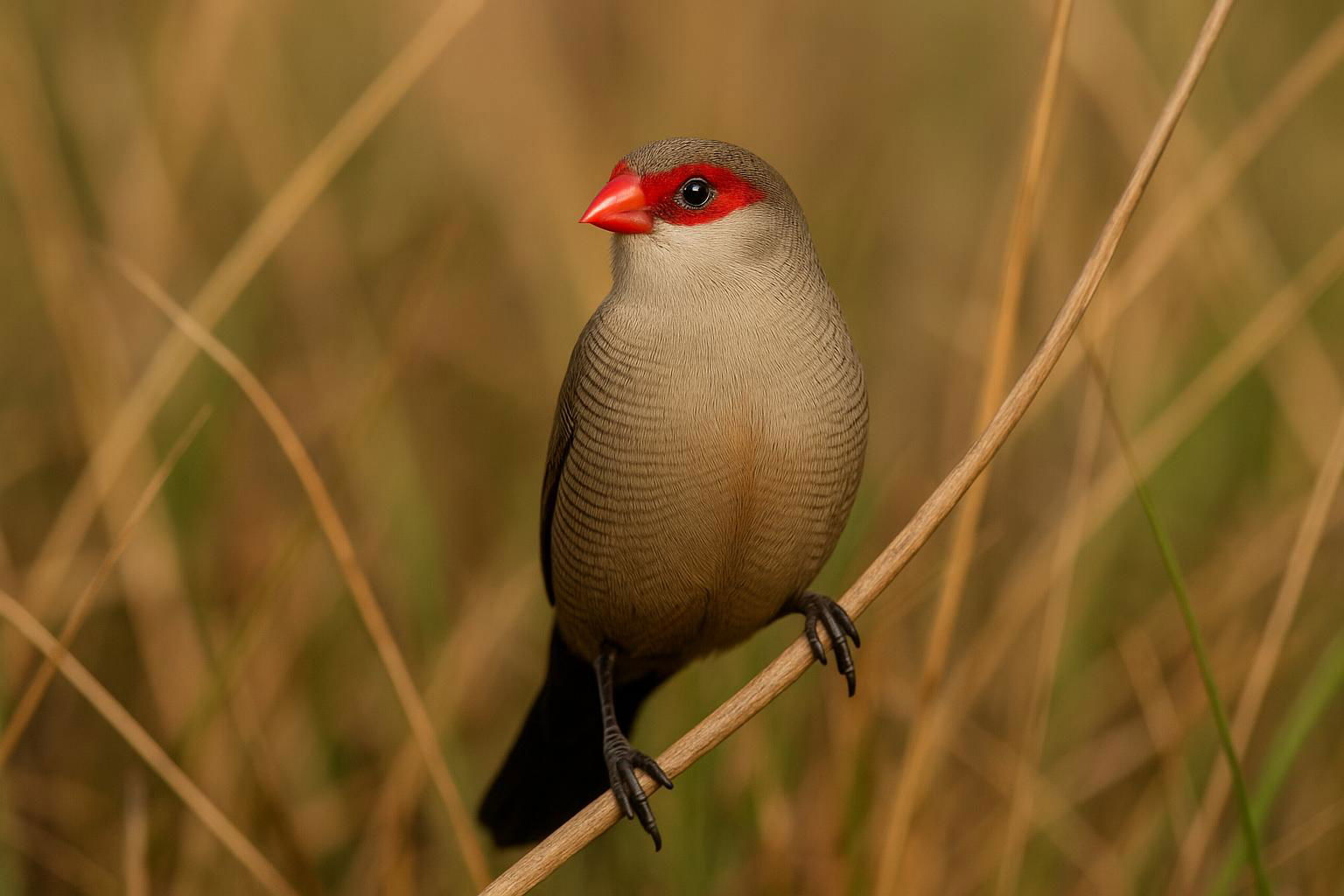
Common Waxbill
Estrilda astrild
The Common Waxbill (Estrilda astrild) is a small, sociable bird native to sub-Saharan Africa, though it has been introduced to many other regions worldwide. Measuring about 11-13 cm in length, it is easily recognized by its slender build, short tail, and vibrant plumage. Its most striking feature is its bright red bill and a characteristic crimson stripe running across its eyes, adding a splash of color to its otherwise soft brown and gray feathers. The underparts often display a subtle barring pattern, while the wings and tail are typically darker.
Common Waxbills are typically found in grasslands, wetlands, and areas of bushy scrub, where they form large, noisy flocks. Their diet mainly consists of grass seeds, making them a frequent visitor to areas with plenty of vegetation. The birds are agile and active, known for their quick, fluttering flights and constant chatter. During breeding season, they are monogamous and build intricate, dome-shaped nests where both parents participate in incubating eggs.
Despite their diminutive size, Common Waxbills are resilient birds that have successfully adapted to a variety of environments outside their native range. They are popular among aviculturists due to their appealing looks and charming behaviors, although their introduction into non-native habitats sometimes raises ecological concerns. Overall, the Common Waxbill's striking appearance and lively demeanor make it a delightful sight in the wild and in captivity.

 All Species & Breeds
All Species & Breeds
 Highland Cattle
Highland Cattle
 Miniature Donkeys
Miniature Donkeys
 All Species Directory
All Species Directory
 Highland Cattle in Virginia
Highland Cattle in Virginia
 Miniature Donkeys in Texas
Miniature Donkeys in Texas












